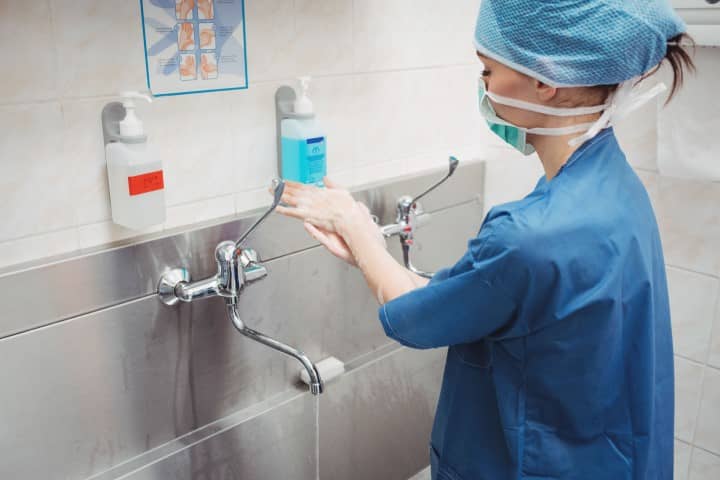For the second instalment of this series, we will run through the most common mistakes we see customers make when cleaning their probes, and the damage this can result in. If you haven’t read the first part yet, you can find it here.
So, what classifies as cleaning?
According to the Guidelines for Reprocessing Ultrasound Transducers, as laid out by ACIPC (Australasian College for Infection Prevention and Control) and ASUM (Australasian Society for Ultrasound in Medicine), cleaning is defined as the removal of contamination from an item to the extent necessary for further processing or for intended use. Processes can vary; but usually involve chemicals such as detergents, soaps, and alcohols. Cleaning is a necessary step in every level of disinfection, from basic washing to sterilisation. You should always refer to the manufacturer’s guidelines when cleaning your probes, taking into consideration the Spaulding Classification and the subsequent level of disinfection needed. Without pre-cleaning (the act of cleaning before disinfection & sterilisation) these processes would not be as effective, and lead to greater risks of cross contamination.
But doesn’t everyone clean their probes the same?
There are countless cleaning methods and processes that vary from place to place. Where one clinic might use a particular process to clean their probe, you might find a hundred other clinics with the exact same probe cleaning it differently. The use of diagnostic ultrasound imaging is expanding beyond its traditional settings to encompass everyday use at hospital bedsides, in emergency settings and even at remote locations. As point of care ultrasound expands, so too does the range of clinicians who utilise it. Because a number of POCUS users aren’t necessarily imaging specialists, they may have little experience with cleaning transducers, and may not understand how certain behaviours could put the equipment at risk. For example, most specialised sonographers are required to learn the principles of ultrasound and how a transducer works, whereas a standard clinician may sit a unit in the application of ultrasound but might not learn the science behind it. This disparity in understanding can lead to inconsistencies in probe care and handling, resulting in accidental damage.
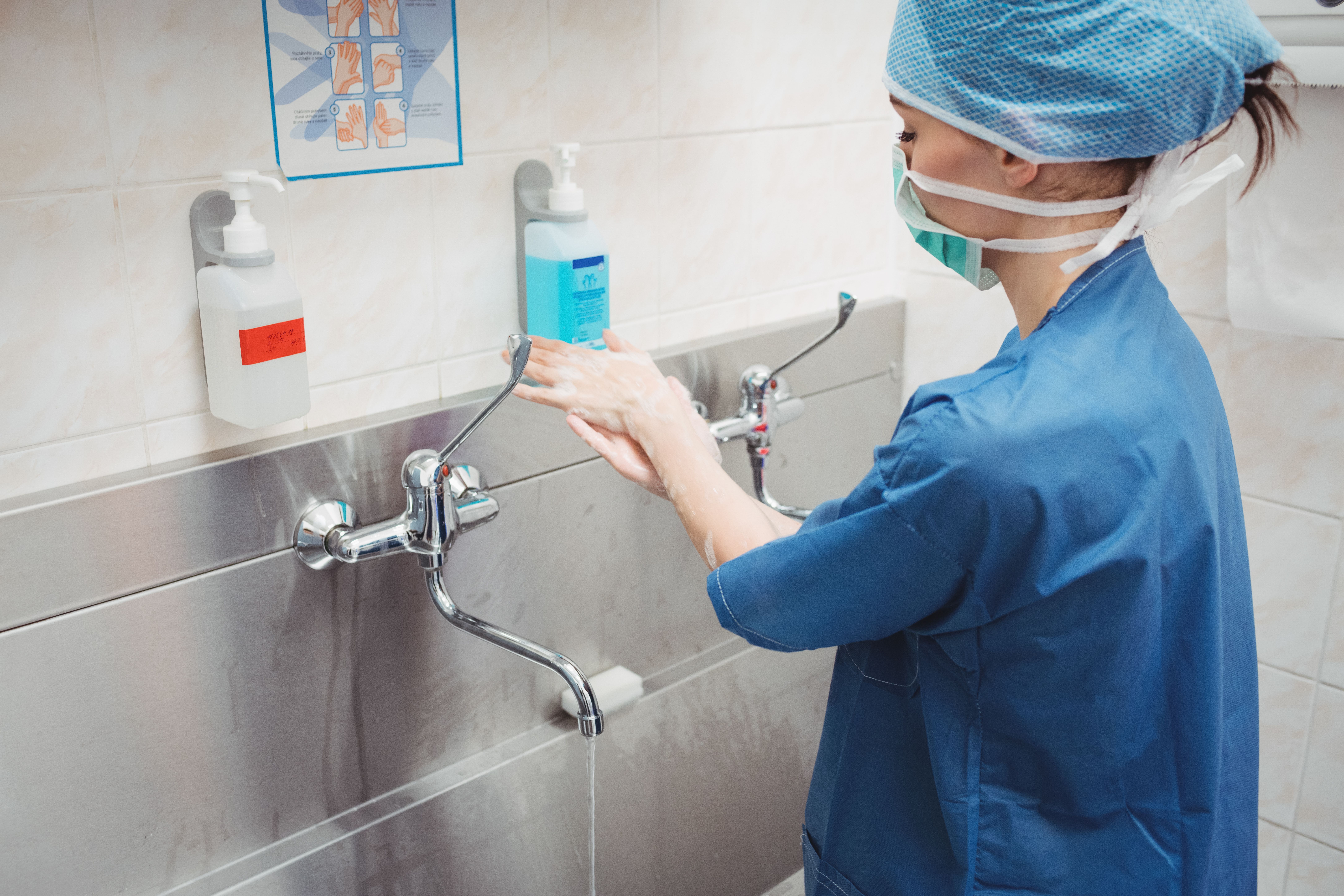
What are the most common cleaning methods?
Some of the most common cleaning and disinfection methods include handwashing with a mild soap and water, mechanical cleaning with a brush or scrubber, chemical disinfectants such as detergents, chemical wipes such as isopropyl wipes, radiation or heat cabinets and ultrasonic cleaners. While there is no perfect solution for all probes, there are some cleaning methods we recommend against. It is always important to follow the manufacturer’s guidelines to ensure your probe has the longest possible lifespan and continues to perform to a high standard.
What are the most common mistakes we see?
Corrosion in the connector is an issue we see quite often, and this is usually caused by hanging the probe up to dry with the connector suspended below the cable. For many of our customers, this is just second nature when cleaning their probes, but what they don’t realise is that they’re actually doing more harm than good. When you allow the probe to hang this way after cleaning, any leftover fluid is able to run down the length of the cable to the delicate circuitry inside the connector. Drying/storing your probe this way also puts unnecessary stress on the wires in the cable, causing them to break or kink which can affect your imaging capabilities.
Here is an example to show the way fluid travels down a probe’s cable to the connector when hung up to dry, and the resultant corrosion to the delicate electronics inside the connector that fluid ingress can cause.
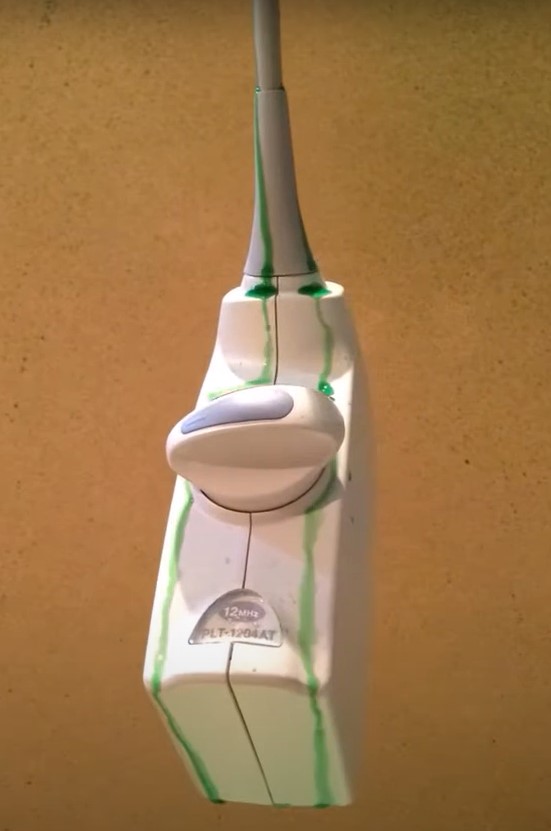

You might be surprised to learn that using the correct cleaning solution but leaving your probe in it for too long is another common way to cause damage. Cleaning solutions often contain solvents and disinfectants which over time can soften the hard plastic casing of your probe. This reduces its durability and leaves the delicate electronics at risk of damage from knocks, falls or drops. The longer you leave your probe in solution, the higher the risk of fluid ingress, regardless of how watertight the seals are. This can lead to corrosion or delamination of the lens, which is visible in the photos below.
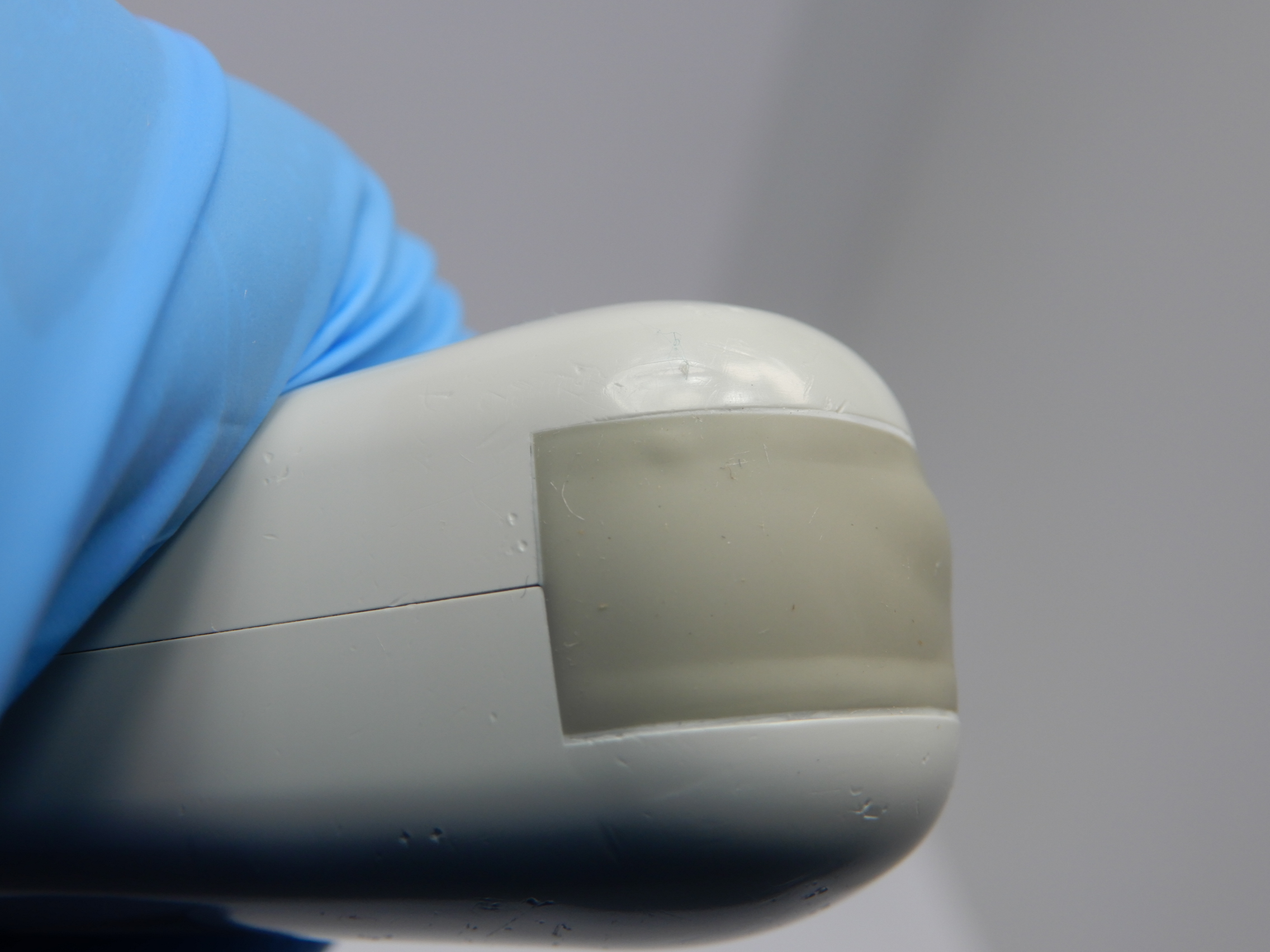
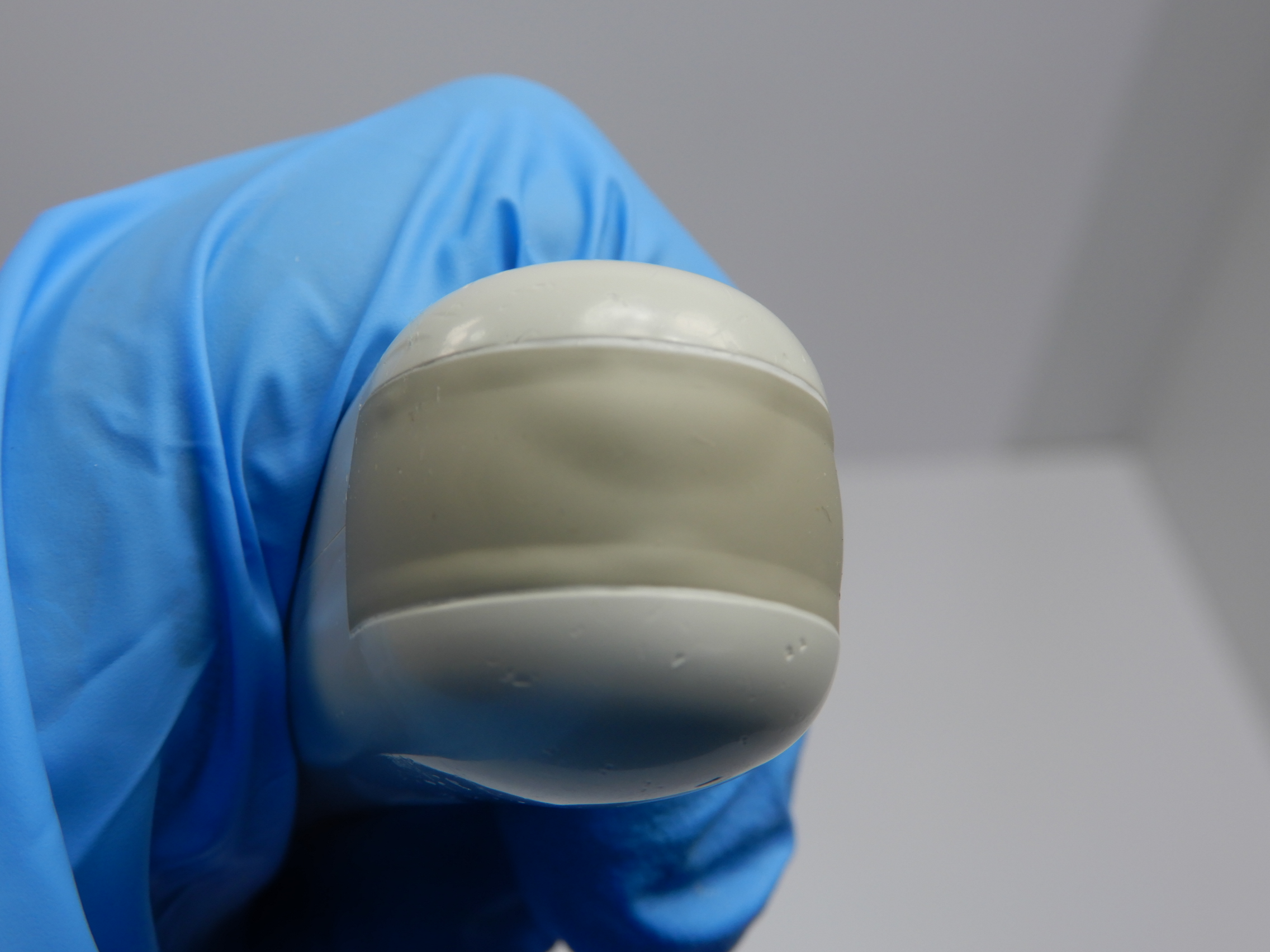
Mechanical cleaning with brushes or other course materials is another method we have noticed which causes unnecessary damage. The lens of your transducer is incredibly delicate, and the bristles on brushes can scratch or perforate your probe’s lens material. It is best to avoid the use of brushes.
Disinfecting your probe with alcohol is one of the most prevalent mistakes we see at ProbeLogic. Transducer after transducer comes in with clear signs of alcohol damage related to disinfection, with dry and cracking lenses, stiff and brittle strain reliefs, and yellow discolouration. While alcohol is okay to use on some probes, if it’s not approved in the manufacturer’s guidelines it’s best to avoid.
So, what do we recommend?
ProbeLogic always recommends you follow the manufacturer’s guidelines first and above all else. Disregarding these guidelines is almost always going to result in damage, especially if the transducer is exposed to this behaviour repeatedly. While it is imperative you clean your probes before any level of disinfection or sterilisation, exposure to incorrect processes and products can cause more harm than good. Some overall advice we recommend you follow is:
- Unless otherwise approved by the manufacturer’s guidelines, it is best to avoid alcohol-based wipes and sanitizers. These can have severely detrimental effects on your probe, especially after repeated exposure.
- Always ensure that the probes are thoroughly dried after cleaning to ensure no residue builds up. Use gentle, lint free cloths to avoid scratching the surface of the lens.
- Only used solutions that are approved in the manufacturer’s guidelines. PH balanced solutions are generally the safest.
- Never leave your probe in solution for too long as it can lower the durability of the case and increase the likelihood of fluid ingress.
- Ensure that when drying, you do not hang the transducer in such a way that fluid can drain down the cable to the connector.
- Avoid brushes when cleaning as the lens material can be easily scratched.
Follow us over the next few weeks for the risks associated with using alcohol as a disinfectant, and whether not following the manufacturer’s cleaning guidelines will actually have a tangible effect on your probes.
Coming up next:
Week 3: Alcohol as a disinfectant – why is it bad?
Week 4: Do the manufacturer’s guideline’s really matter?

